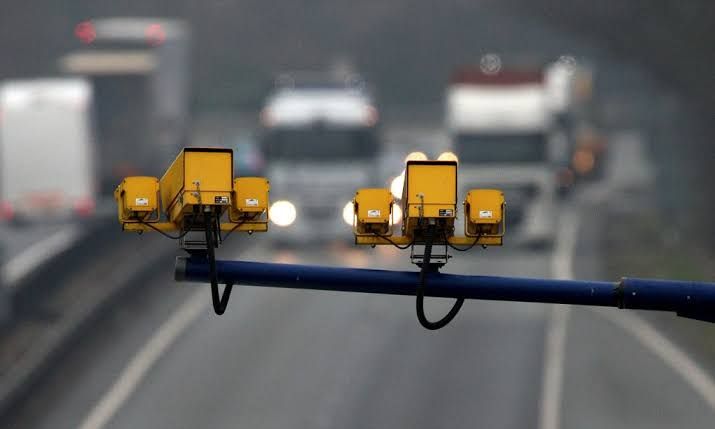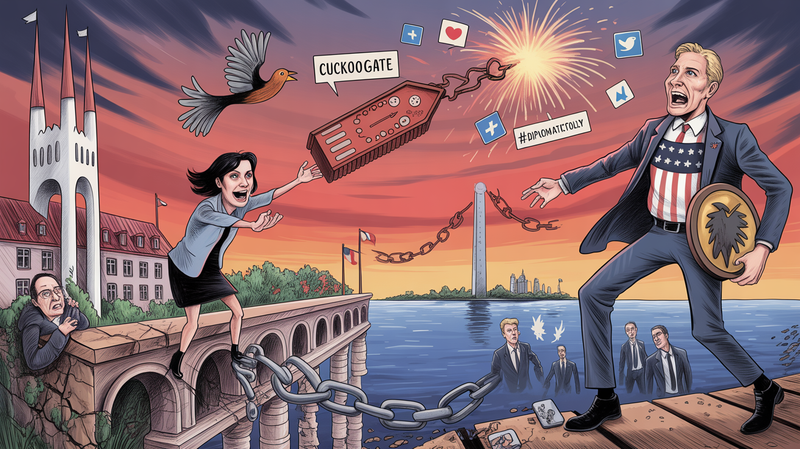Orwell Arrives in Estonia: Unseen Surveillance Infrastructure
As summer heats up in Estonia, its citizens unknowingly find themselves under the watchful eye of a new surveillance infrastructure, the scale and invasiveness of which bears alarming resemblances to the systems employed by China. This was not the vision many Estonians had for their small, free, and progressive country.

As summer heats up in Estonia, its citizens unknowingly find themselves under the watchful eye of a new surveillance infrastructure, the scale and invasiveness of which bears alarming resemblances to the systems employed by China. This was not the vision many Estonians had for their small, free, and progressive country. Yet, despite not appearing on mainstream news outlets for long, the evidence is clear: the Orwellian era has arrived in Estonia.
The first AI-based speed camera has been installed on the Tallinn-Tartu highway, designed to register not just the speed and number plate of each vehicle, but also to identify every passenger, determine the number of occupants, check for unlawful use of mobile phones by the driver, and ensure seat belts are being worn. More than this, it scans all activity inside the vehicle, links up with national databases, and assesses compliance with insurance and tax obligations.
The data is intended to be used for penalizing offenders, with predicted significant positive impacts on the state budget. The cameras are interconnected across the country, facilitated by AI, and are said to pose no threat to law-abiding citizens.
In a country like Estonia, such dystopian developments are unprecedented. However, this kind of surveillance system has already been implemented in the UK, where it started its test period on the A23 highway in Lambeth. The producers of this "wide potential" system claim that their "Redspeed Sentio is designed to be just the camera you want."
So what kind of camera do you want in your car cabin? What type of state surveillance do you want in your vehicle?
Advocates of these systems argue that rules are meant to be obeyed and having a police officer on every corner is unrealistic. Critics question why we are okay with trusting our data to Facebook, but not the state. As eloquently summarized by jurist Sven Kõllamets, "The power always has a greater temptation and opportunity to abuse collected data, hence the justified question, is it necessary to have these data (how to do it so that it is not necessary), who sees these data, how they are stored, what is the possibility of them being stolen in a hacking attack and how to make sure that we have as little data as possible and as few people as possible who see this data, because our state is not created for regulation and control, but for fulfilling obligations to protect people's basic freedoms and rights... In a rule of law, people should be trusted first, we are moving to a place where we primarily suspect people and this is not that state. A suspicious, controlling and punishing state was the Soviet Union."
The issue at hand here is a disturbing shift in state-citizen trust dynamics. The core of the problem is not only about the invasion of privacy, but the irreversible changes it causes in societal relationships. Once privacy is surrendered, it cannot be reclaimed.
Mass surveillance initiatives not only reshape the citizen-state relationship but also open up potential for misuse, corruption, and even greater intrusions into private life. The creation of such a surveillance system signals the onset of ever more ambitious attempts at intervention. As history repeatedly teaches us, once surveillance infrastructure is established, it tends to proliferate, rarely retracting but rather extending into more and more domains of life.
The trajectory that Estonia is taking with this implementation is a worrying step towards the normalization of such surveillance. The system currently in place might be operated by trustworthy individuals with respect for citizens' privacy, but there is no guarantee about the intentions or competence of future operators.
For now, it is unclear what technical configurations the cameras have, who has access to the data, and how securely the data are stored. Furthermore, no information has been released about what exactly is captured in the images or when and how the data will be deleted.
This move towards heightened surveillance presents a stark contrast to the freedom and progressivism Estonia has strived for since regaining independence. The current trend of mass surveillance not only invades privacy but also threatens democratic processes and values. It is not only an issue of what the state can do, but also what it should do.
In a world increasingly characterized by surveillance and suspicion, Estonia must carefully navigate its path. Its citizens should be vigilant and critical, demanding transparency and accountability from those in power. The preservation of the privacy and civil liberties we hold dear depends on our collective vigilance and insistence on maintaining the democratic principles that our society is built upon.
Orwell may have arrived in Estonia, but it is not too late to show him the door.




